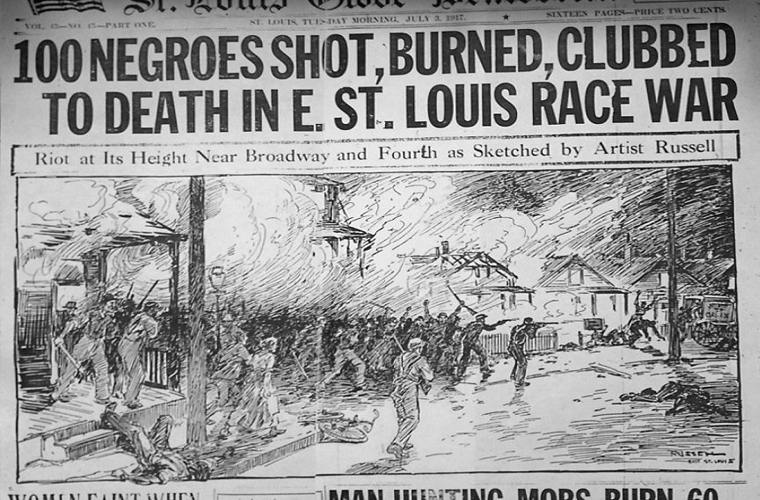In 1917, white workers of the Aluminum Ore Company in East St. Louis went on a massive strike. This prompted the management of the company to employ African-Americans and a few other willing white people to work. And that decision started one of the deadliest riots in America.
On July 2, 1917, the East St. Louis, Illinois race riot erupted leading to the slaughtering of at least 100 African-Americans (some sources put the figure at nearly 200) with over 6,000 others left homeless. By comparison, eight whites died.
This riot, described as arguably one of the worst race riots of the early 20th century, involved mobs of whites attacking the African-American community, killing and burning down their houses while the police either stood by or arrested African-Americans.

The city of East St. Louis, Illinois was the scene of one of the bloodiest race riots in the 20th centuryBut the riots did not just start out of nothing. In February 1917, 470 African-American workers were hired to replace white workers who had gone on strike against the Aluminum Ore Company.
:focal(2067x1317:2068x1318)/https://public-media.si-cdn.com/filer/fd/9d/fd9da48d-bdcd-4244-9e42-648b1955f3f4/gettyimages-514690722_master.jpg)
When the situation started escalating, Frank Lowden, who was Illinois Governor, eventually called in the National Guard to control the violence. The mobs slowly dispersed, bringing some calm back to the town.
However, the May 28th disturbances were only an introduction to the violence that would later erupt on July 2, 1917. Following the May 28 riots, little was done to prevent any further problems: no precautions were taken to ensure white job security or to grant union recognition. This further increased the already-high level of hostilities towards African-Americans.

Racial tensions began simmering in East St. Louis—a city where thousands of blacks had moved from the South to work in war factories—as early as February 1917. (Smithsonian National Museum of African American History and Culture, Gift of Bobbie Ross in memory of Elizabeth Dillard)There were also no reforms in the police force, which did little to quell the violence in May. With time gone by already, Governor Lowden then ordered the National Guard out of the city on 10th June, leaving residents of East St. Louis in an uneasy state of high racial tension, especially the African-Americans.
On the 2nd of July, 1917, the violence that seemed quelled, resumed. Men, women, and children were beaten and shot to death. Around 6 o’clock that evening, white mobs began to set fire to the homes of black residents. Residents had to choose between burning alive in their homes, or run out of the burning houses, only to be met by gunfire.
In other parts of the city, white mobs began to lynch African-Americans against the backdrop of burning buildings. As darkness arrived and the National Guard returned, the violence began to decrease but did not come to a complete stop.
“Thousands of blacks were streaming across that bridge when what they called the ‘race war’ got into full swing,” Dhati Kennedy, whose father, uncles, and aunts lived through the riots, narrated. “When that happened, the police shut down the bridge, and no one could escape. Some, in desperation, tried to swim and drowned.”
The racial violence provoked national outrage among both African-Americans and whites. The NAACP organized a silent protest march down Fifth Avenue in New York City on 29th July 1917. A number of prominent whites, including former President Theodore Roosevelt and former Supreme Court Justice Charles Evans Hughes, denounced the racist violence and demanded that President Woodrow Wilson takes action to prevent further violence.
Preoccupied with World War I, Wilson took no action on racial violence at the time and did not issue a statement condemning mob violence until a year later, on 26th July 1918.

